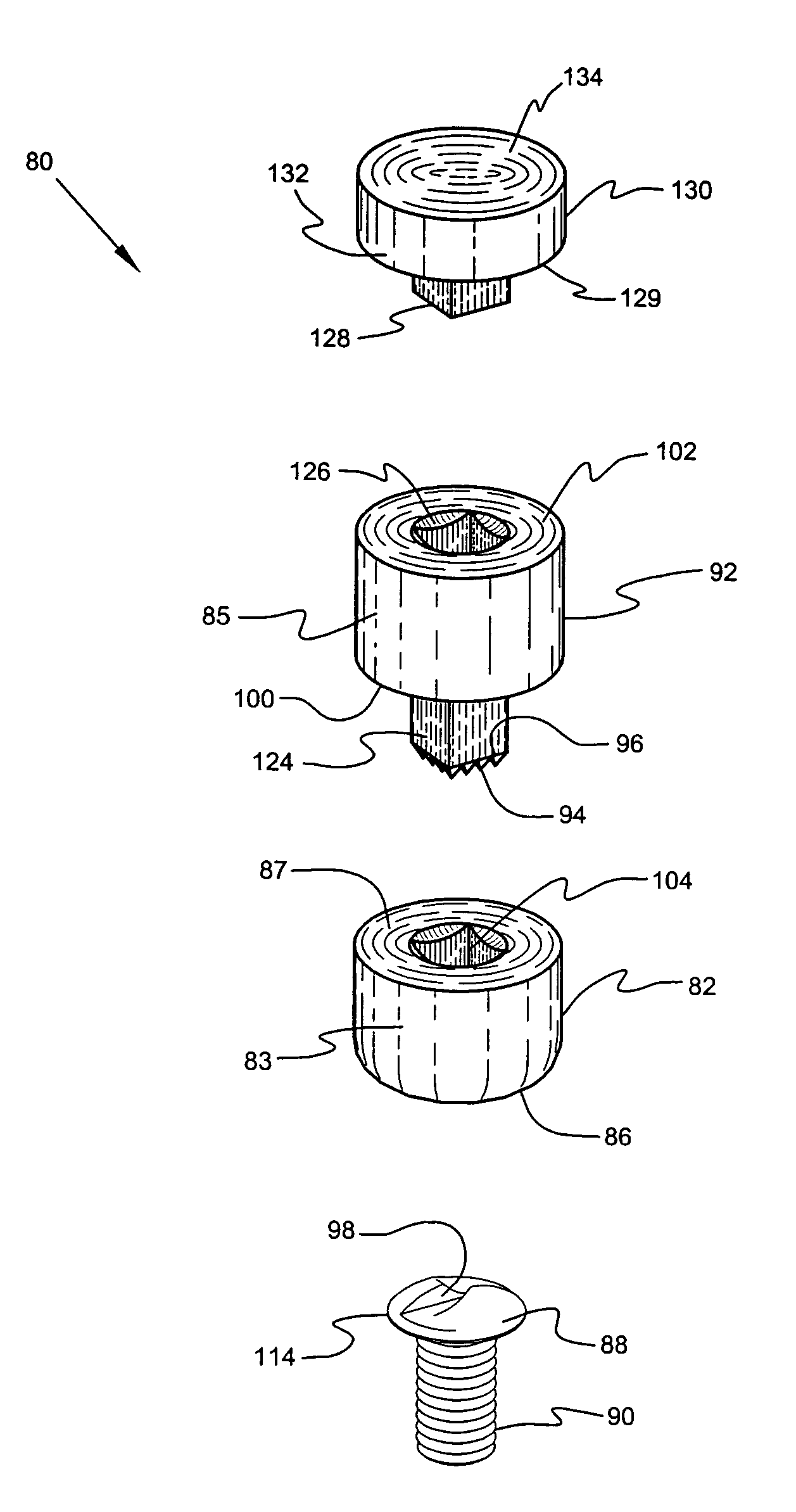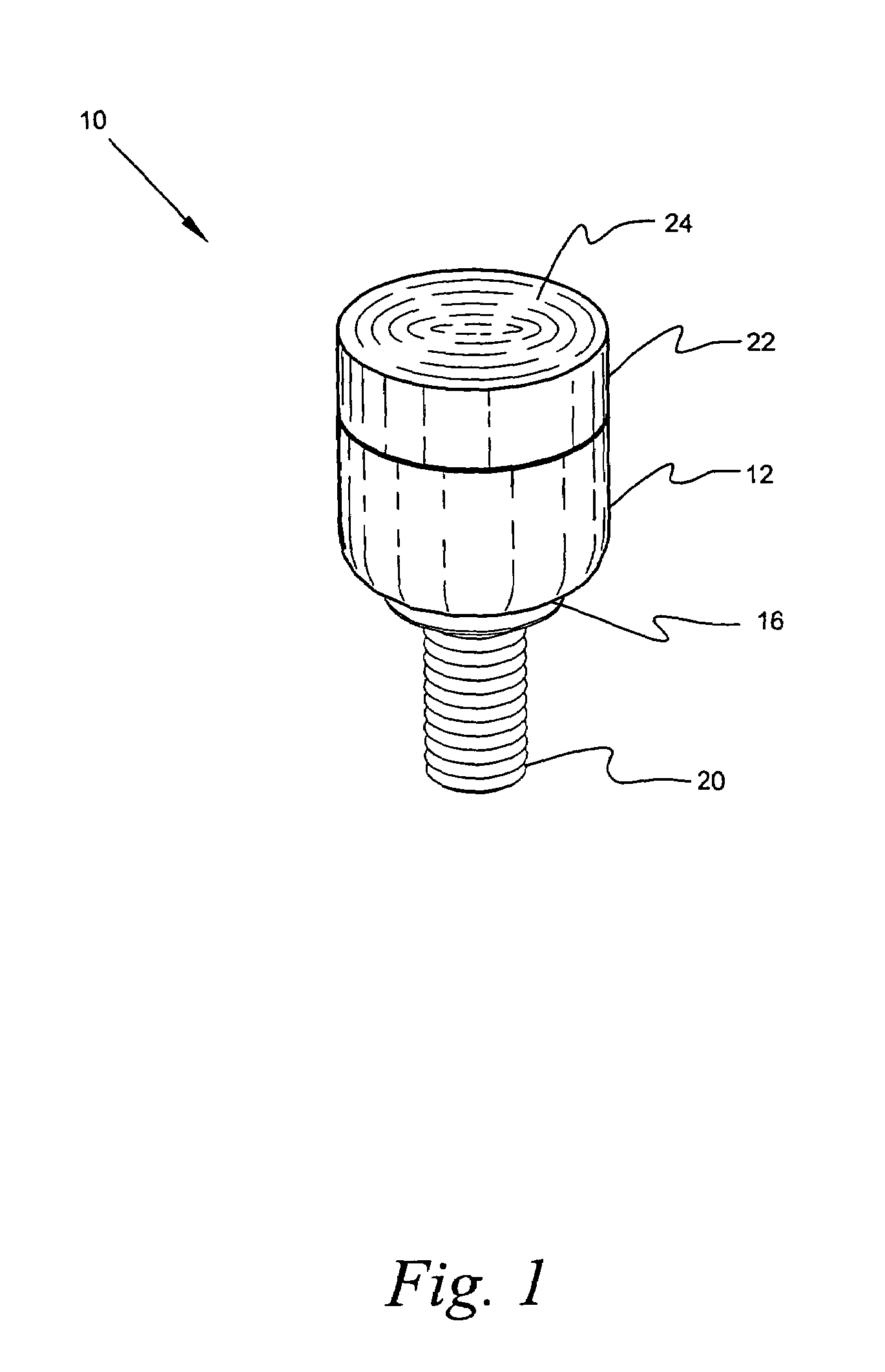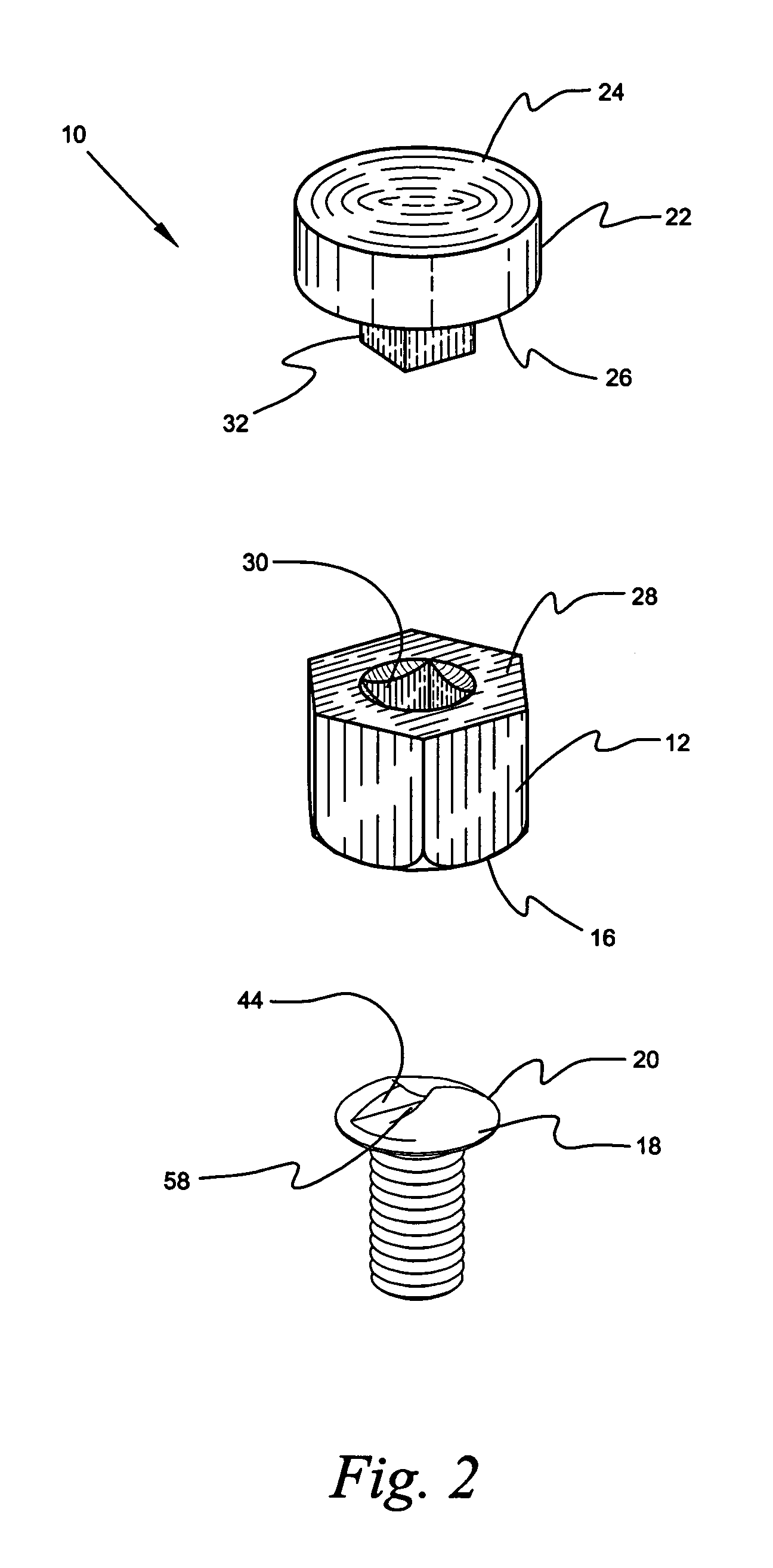Impact driver and fastener removal device
a technology of impact driver and fastener, which is applied in the direction of hand chisels, portable percussive tools, wrenches, etc., can solve the problem that projections cannot be driven sufficiently deep into the fastener head without damaging the device, and achieve the effect of increasing the grasping force of the fastener engagement member and increasing the rotary for
- Summary
- Abstract
- Description
- Claims
- Application Information
AI Technical Summary
Benefits of technology
Problems solved by technology
Method used
Image
Examples
Embodiment Construction
[0056]Referring now to the drawings and in particular to FIGS. 1–9, a fastener impact driver device 10 in accordance with the present invention, is denoted by numeral 10. The device 10 includes a fastener engagement member 12 having a plurality of projections 14 disposed about a lower portion 16 that engages a corresponding peripheral portion 18 of a fastener 20. The device has many applications, but the preferred use is for extracting a one way fastener which is the fastener 20 depicted in FIG. 1. The device 10 further includes a positioning member 22 having an upper portion 24 that ultimately receives a force thereupon, said positioning member 22 having a lower portion 26 that engages a cooperating upper portion 28 of the fastener engagement member 12 whereby a force (a hammer strike) is imparted upon the upper portion 24 of the positioning member 22 to drive the projections 14 of the fastener engagement member 12 into the fastener 20 without damage to the fastener engagement memb...
PUM
 Login to View More
Login to View More Abstract
Description
Claims
Application Information
 Login to View More
Login to View More - R&D
- Intellectual Property
- Life Sciences
- Materials
- Tech Scout
- Unparalleled Data Quality
- Higher Quality Content
- 60% Fewer Hallucinations
Browse by: Latest US Patents, China's latest patents, Technical Efficacy Thesaurus, Application Domain, Technology Topic, Popular Technical Reports.
© 2025 PatSnap. All rights reserved.Legal|Privacy policy|Modern Slavery Act Transparency Statement|Sitemap|About US| Contact US: help@patsnap.com



